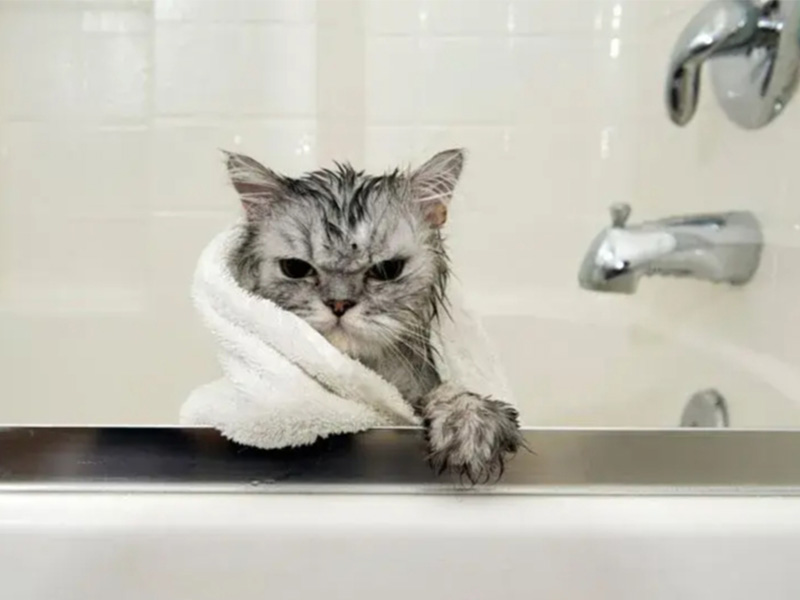
Most domestic cats are fastidious self-groomers and rarely require full baths. If your cat stays indoors and your home is kept clean, you can often skip the bath—cats naturally remove dirt and loose hair by licking and scratching. However, some owners prefer the extra freshness of an occasional wash. In that case, giving your cat a bath once every six months to a year is usually sufficient.
What Happens If You Force a Bath?
Cats strongly resist water and some grooming noises. Forcing a bath can cause severe stress (known as “stress-induced crisis”):
• Mild Stress Responses: Excessive shedding, fever, vomiting, diarrhea
• Severe Stress Responses: Seizures, shock, acute heart failure, even sudden death
Cats with heart or respiratory issues (e.g., certain pedigreed breeds) are at high risk of fatal complications under bath stress, so forcing them into water or loud blow-drying is dangerous. Additionally, frustrated handlers may lose patience, increasing the cat’s anxiety and risk of injury to both.
When Not to Bathe Your Cat
Avoid bathing in these situations:
1. Immune-compromised Cats: Kittens before full vaccination or cats overdue on boosters may develop infections if their immune system is suppressed by stress.
2. Post-Surgery Cats: Stress and moisture can reopen wounds or introduce bacteria, delaying healing.
3. Cats with Heart or Lung Conditions: High stress can trigger acute shock or cardiac events.
4. Fiercely Tempered Cats: Highly anxious or aggressive cats resist handling and can injure themselves or you.
How to Help Your Cat Adapt to Bathing
When a bath is necessary—due to rolling in toxins, heavy flea treatment, or medical reasons—help your cat adjust:
1. Identify the Fear Trigger: Test whether your cat fears water spray, the sound of the dryer, or both. For example, turn the dryer on at a distance and observe.
2. Desensitize Gradually: Allow your cat to explore the sound or spray from afar without restraint. Reward calm behavior with treats and gentle praise.
3. Increase Proximity Slowly: Each session, move a bit closer if your cat stays relaxed. Never force closeness; let your cat set the pace.
4. Start with Gentle Rinsing: Compared to loud blow-drying, a mild, lukewarm water rinse is often less frightening.
5. Choose the Right Tools: Use a quiet, low-pressure sprayer and a low-heat hair dryer. Have towels and non-slip mats ready.
6. Read Your Cat’s Cues: Learn your cat’s body language—ears back, tail twitch, vocalizing—to stop before panic sets in.
With patience and positive reinforcement, many cats can learn to tolerate—and even tolerate—occasional bathing.
Indoor cats generally do not need regular baths, but an occasional wash can help keep them fresh. Never force a bath on a cat with health issues or high stress; instead, focus on gradual desensitization and positive experiences. By understanding your cat’s fears and introducing water and noise gently, you can make bath time safer and less stressful for both of you.
